Industry News
Excellent and advantageous Stainless steel supplier in China——Huaxiao Metal
Mig welding stainless steel
- June 27, 2023
- 3:04 am

Brief introduction
Mastering the art of MIG welding stainless steel opens up a world of possibilities. With precision and finesse, this welding technique brings together strength and beauty in a single weld. As sparks fly and the metal fuses, skilled hands shape a future of durable structures and intricate designs. MIG welding stainless steel is more than a process—it’s a fusion of artistry and engineering, where innovation meets craftsmanship. Let the brilliance of MIG welding on stainless steel ignite your imagination and propel your projects to new heights.
So,How to weld stainless steel?
MIG welding, or Gas Metal Arc Welding (GMAW), is another popular method for welding stainless steel. It utilizes a consumable electrode wire that continuously feeds into the weld area, along with a shielding gas to protect the molten metal. MIG welding is known for its high productivity and is suitable for both thin and thick stainless steel materials.
This article is interesting and brings up the common question of mig welding stainless steel. While the problem may seem simple, in reality, it involves many complicated factors and technical details. In the following articles, we will delve deeper into these issues and answer these common but confusing questions for you.
Contents
What is MIG welding, and how does it work for stainless steel?
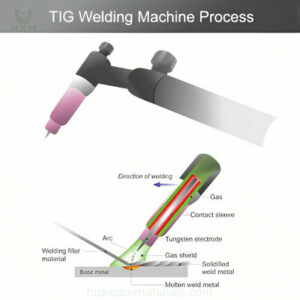
MIG welding, or Metal Inert Gas welding, is a widely used process for joining stainless steel. It involves feeding a consumable wire electrode through a welding gun, which melts and fuses with the base metal. A shielding gas, such as argon, is used to protect the weld pool from atmospheric contamination.
MIG welding offers several advantages for stainless steel, including high welding speeds, good control over the process, and the ability to weld various thicknesses of stainless steel. It is commonly used in industries such as automotive, construction, and manufacturing for fabricating stainless steel structures, components, and assemblies.
When working with stainless steel, proper setup and technique are crucial. This includes selecting the appropriate welding wire and shielding gas, as well as having knowledge of stainless steel properties and welding techniques.
For customers seeking stainless steel materials for MIG welding, reputable suppliers in the industry, including those specializing in stainless steel in China, offer a wide range of options to meet their specific requirements.
MIG welding, or Gas Metal Arc Welding (GMAW), is another popular method for welding stainless steel. It utilizes a consumable electrode wire that continuously feeds into the weld area, along with a shielding gas to protect the molten metal. MIG welding is known for its high productivity and is suitable for both thin and thick stainless steel materials.
What are the advantages of using MIG welding for stainless steel projects?
MIG welding, also known as Metal Inert Gas welding, offers several advantages for stainless steel projects.
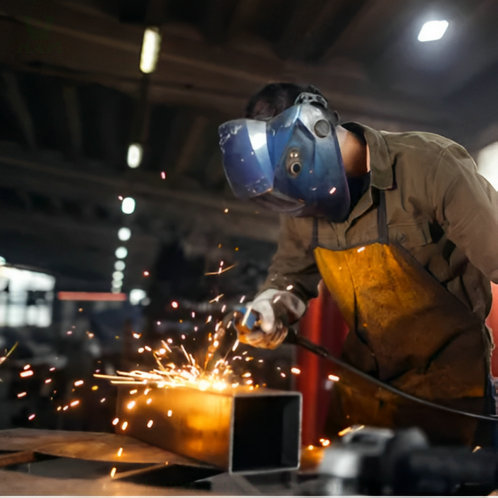
Versatility:
MIG welding is suitable for welding a wide range of stainless steel alloys, including austenitic, ferritic, and duplex grades.
High productivity:
MIG welding enables high welding speeds, resulting in faster project completion and increased productivity.
Good weld quality:
MIG welding produces clean and aesthetically pleasing welds with minimal spatter and distortion.
Control and precision:
MIG welding allows for precise control over the welding parameters, ensuring consistent and accurate welds.
All-position welding:
MIG welding can be performed in various positions, including flat, horizontal, vertical, and overhead, providing flexibility in project execution.
Efficiency and cost-effectiveness:
MIG welding is a relatively efficient process, minimizing material waste and reducing overall project costs.
Suitable for thin materials:
MIG welding is well-suited for welding thin stainless steel sheets or components without causing excessive heat distortion.
Easy to learn and operate:
MIG welding is relatively easy to learn and operate, making it accessible to both experienced welders and beginners.
Wide availability of equipment and consumables:
MIG welding equipment and consumables, such as welding wires and shielding gases, are widely available, including from stainless steel suppliers in China.
Industry acceptance:
MIG welding is a commonly used and widely accepted welding method in various industries, ensuring compatibility and familiarity across different projects.
By leveraging the advantages of MIG welding, customers can achieve efficient, high-quality, and cost-effective stainless steel welds for their projects. Reputable stainless steel suppliers in China can provide the necessary materials and support to meet their specific requirements.
What are the key considerations for selecting the appropriate filler material for MIG welding stainless steel?
When selecting the appropriate filler material for MIG welding stainless steel, several key considerations should be taken into account:

Stainless steel grade compatibility:
Ensure that the filler material is compatible with the stainless steel grade being welded. Different grades have varying alloy compositions, and using a filler material with similar composition helps maintain the desired properties and corrosion resistance.
Filler metal type:
Choose the appropriate filler metal type based on the specific welding requirements. Common types include austenitic stainless steel filler metals (e.g., ER308, ER316) for general-purpose welding and duplex stainless steel filler metals (e.g., ER2209) for duplex stainless steel welding.
Mechanical properties:
Consider the required mechanical properties of the weld joint, such as tensile strength and impact resistance. Select a filler material that can provide the desired strength and toughness characteristics.
Corrosion resistance:
Ensure that the filler material provides corrosion resistance comparable to that of the base metal. This is particularly crucial for applications where the welds will be exposed to corrosive environments.
Weld appearance:
Consider the desired appearance of the weld. Some filler materials offer better color match and blending with the stainless steel base metal, resulting in aesthetically pleasing welds.
Welding position:
Take into account the welding position or joint configuration. Some filler materials are better suited for specific welding positions, such as vertical or overhead welding.
Availability and cost:
Consider the availability and cost of the filler material. Reputable stainless steel suppliers in China can provide a range of filler materials, ensuring accessibility and cost-effectiveness.
Welding process compatibility:
Ensure that the chosen filler material is compatible with the MIG welding process. Different filler metals have different wire diameters and shielding gas requirements, so it is important to select a filler material that can be used with MIG welding equipment.
By carefully considering these key factors, customers can select the appropriate filler material for MIG welding stainless steel, resulting in high-quality and reliable welds for their projects.
What are the recommended shielding gases for MIG welding stainless steel?
When MIG welding stainless steel, the choice of shielding gas plays a crucial role in achieving high-quality welds. Here are the recommended shielding gases for MIG welding stainless steel:
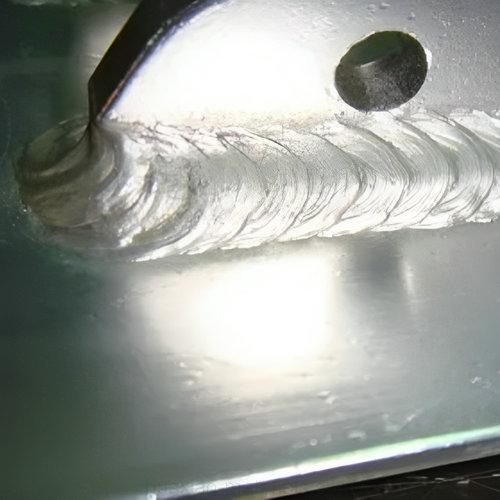
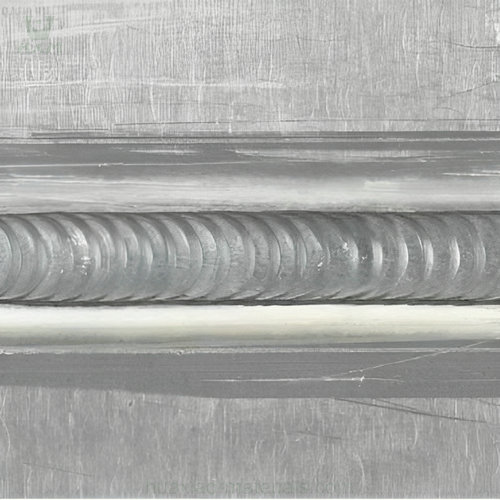

Argon:
Argon is the most commonly used shielding gas for MIG welding stainless steel. It provides excellent protection against atmospheric contamination, resulting in clean and sound welds. Pure argon is typically used for welding austenitic stainless steels.
Argon-CO2 mixtures:
Mixing carbon dioxide (CO2) with argon improves the arc stability and penetration during welding. Argon-CO2 mixtures, such as 98% argon and 2% CO2 or 90% argon and 10% CO2, are commonly used for MIG welding stainless steel. The CO2 content enhances the heat transfer, allowing for faster welding speeds and improved productivity.
Argon-Helium mixtures:
Helium can be added to argon to increase the heat input during welding. This is particularly useful when welding thicker stainless steel sections or when higher welding speeds are desired. Argon-Helium mixtures offer deeper penetration and higher productivity.
The selection of the appropriate shielding gas depends on factors such as the stainless steel grade, welding parameters, and desired weld characteristics. Consulting with stainless steel suppliers in China or welding professionals can provide further guidance on the specific shielding gas to use for a given application.
It’s important to note that the shielding gas flow rate should be properly set to ensure adequate coverage of the weld zone and prevent contamination. The recommended flow rate typically ranges between 20 and 25 cubic feet per hour (CFH) for argon and argon-CO2 mixtures.
By using the recommended shielding gases and optimizing the flow rate, MIG welding stainless steel can be performed with optimal weld quality, minimal spatter, and excellent protection against oxidation and porosity.
How can I ensure proper joint preparation and fit-up for MIG welding stainless steel?
Proper joint preparation and fit-up are crucial for achieving successful MIG welding of stainless steel. Follow these guidelines to ensure optimal results:

Clean the joint:
Before welding, ensure that the joint surfaces are clean and free from contaminants, such as oil, grease, rust, and paint. Use a wire brush or appropriate cleaning methods to remove any surface impurities.
Bevel the edges (if necessary):
Depending on the thickness of the stainless steel and the welding requirements, beveling the joint edges may be necessary. This helps in achieving proper penetration and weld strength. The bevel angle and width should be in accordance with the welding specifications.
Maintain proper gap and fit-up:
Ensure that the joint has the correct gap and fit-up. The gap should be consistent and within the recommended range to allow for proper weld penetration. Use appropriate clamping methods or fixtures to hold the parts in position during welding.
Use accurate tack welding:
Tack weld the joint at regular intervals to hold the parts together securely. Tack welds should be small and evenly spaced along the joint. They act as temporary welds to maintain alignment during the welding process.
Control heat input:
Controlling the heat input is important to prevent distortion and warping of the stainless steel. Use proper welding techniques, such as maintaining an appropriate welding speed and adjusting the voltage and wire feed settings according to the material thickness and joint configuration.
Ensure joint accessibility:
Ensure that the joint is easily accessible for the welding gun or torch. Adequate joint accessibility allows for better control and maneuverability during the welding process.
Proper joint preparation and fit-up contribute to better weld quality, improved weld penetration, and reduced chances of defects. Following these guidelines and referring to welding standards and recommendations from stainless steel suppliers in China or welding professionals will help ensure the successful MIG welding of stainless steel.
Are there any special techniques or tips for achieving high-quality MIG welds on stainless steel?
Achieving high-quality MIG welds on stainless steel requires attention to detail and adherence to specific techniques. Consider the following tips to enhance the quality of your welds:
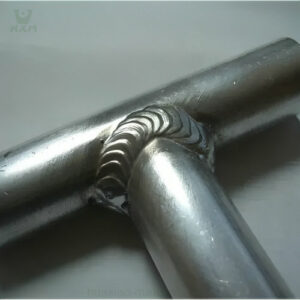
Use the correct shielding gas:
For stainless steel, a commonly used shielding gas is a mixture of argon and carbon dioxide (CO2) or argon and oxygen (O2). These gases help protect the weld from atmospheric contamination and ensure a stable arc.
Select the appropriate filler wire:
Choose a filler wire specifically designed for stainless steel welding, such as ER308, ER309, or ER316. The selection depends on the stainless steel grade and intended application. Consult with stainless steel suppliers in China for recommendations.
Control the heat input:
Stainless steel is prone to heat distortion, so it’s crucial to control the heat input during welding. Adjust the voltage, current, and wire feed speed to maintain a stable arc and prevent overheating.
Maintain a proper travel speed:
Welding too slowly can result in excessive heat input, while welding too fast may lead to poor penetration. Find the optimal travel speed for your specific welding parameters and maintain a consistent pace.
Use proper joint fit-up:
Ensure proper joint fit-up with minimal gaps to achieve good fusion and prevent defects. Beveling the joint edges or using backing gas can help improve weld quality and penetration.
Pay attention to cleanliness:
Cleanliness is vital for stainless steel welding. Remove any contaminants, such as oil, grease, or dirt, from the surface to prevent weld contamination and porosity.
Employ back purging (if necessary):
In applications where the backside of the weld is critical, consider using a back purging technique to protect the backside of the weld from oxidation. This involves introducing an inert gas, such as argon, on the backside of the joint during welding.
Practice proper weld technique:
Maintain a consistent travel angle, gun-to-work distance, and steady hand motion during welding. Avoid excessive weaving or erratic movements that can result in an uneven bead appearance.
By applying these techniques and seeking advice from stainless steel suppliers in China or experienced welders, you can achieve high-quality MIG welds on stainless steel, ensuring the integrity and performance of your welded components.
Where can I find reputable stainless steel suppliers in China for my MIG welding projects?
If you are looking for reputable stainless steel suppliers in China for your MIG welding projects, there are several avenues you can explore:
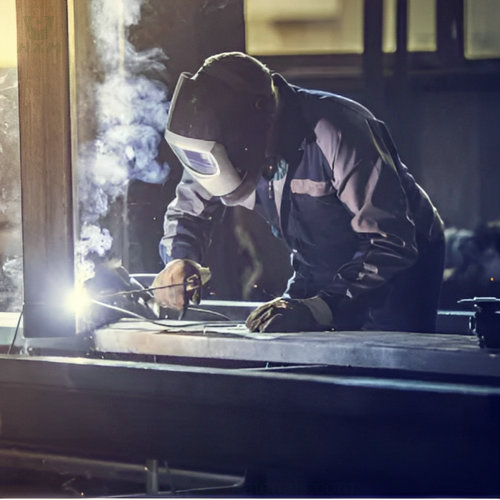
If you are looking for a reputable stainless steel supplier in China for your MIG welding projects, look no further. Our company is a trusted provider of high-quality stainless steel products, catering to various industries and applications.
To ensure your project’s success, we offer a comprehensive range of stainless steel products suitable for MIG welding. Our products are manufactured using advanced techniques and adhere to stringent quality control measures, guaranteeing superior performance and durability.
As a leading stainless steel supplier, we understand the importance of proper joint preparation and fit-up for MIG welding. Our team of experts can provide valuable guidance and support, ensuring that your welding joints are properly prepared and aligned for seamless welding.
We also offer specialized techniques and tips to achieve high-quality MIG welds on stainless steel. Our experienced welders and engineers are well-versed in the intricacies of stainless steel MIG welding, allowing us to deliver exceptional results.
Furthermore, our company has a strong network and partnerships with reputable stainless steel suppliers in China. We can assist you in finding the right materials and alloys that meet your specific requirements, ensuring optimal weldability and performance.
We take pride in our commitment to customer satisfaction and strive to provide an exceptional sourcing experience. Whether you need small quantities or large-scale stainless steel supply, we have the capabilities and resources to fulfill your demands.
Contact us today to discuss your MIG welding project needs and discover why we are the preferred stainless steel supplier in China. Trust us to deliver top-quality products, technical expertise, and reliable support for your stainless steel requirements.
Delivery and Logistics:
Consider the supplier’s delivery capabilities and logistics network. Timely delivery of stainless steel pipes is essential to avoid project delays. Verify the supplier’s ability to handle large orders and meet your project’s timeline. Additionally, evaluate their packaging and transportation methods to ensure that the pipes will arrive in good condition.
Price and Cost-effectiveness:
While price is a significant factor, it should not be the sole determinant. Consider the overall value provided by the supplier in terms of product quality, technical support, and reliability. Compare prices from multiple suppliers, but also consider factors such as long-term performance, durability, and supplier reputation.
Supplier Reputation and Reviews:
Research the reputation of the stainless steel pipe supplier in the industry. Look for customer reviews, testimonials, and references to gauge their track record. A reputable supplier with positive feedback indicates their commitment to customer satisfaction and product quality.
Conclusion:
In conclusion, MIG welding stainless steel offers numerous advantages for various projects. It is a versatile and efficient welding process that provides excellent weld quality and productivity. By selecting the appropriate filler material, shielding gas, and ensuring proper joint preparation and fit-up, high-quality MIG welds can be achieved on stainless steel.
Some key considerations when MIG welding stainless steel include choosing the right filler material based on the base metal and desired mechanical properties. The selection of shielding gas is crucial, with options such as argon-based mixtures recommended for stainless steel welding.
Proper joint preparation and fit-up are essential for successful MIG welding. Thorough cleaning, accurate alignment, and appropriate gap spacing contribute to strong and reliable welds. Employing special techniques like back-purging can enhance weld quality and prevent contamination.
To ensure the best results, it is crucial to source stainless steel from reputable suppliers. China has a vast market of stainless steel suppliers offering high-quality materials suitable for MIG welding projects. Conducting thorough research and considering factors such as product quality, certifications, and customer reviews can help in finding reliable suppliers.
In your search for reputable stainless steel suppliers in China, consider our company as a trusted source. We offer a wide range of stainless steel products, backed by superior quality control measures. Our experienced team provides expert guidance and support for joint preparation, fit-up, and achieving high-quality MIG welds on stainless steel.
With our network and partnerships in the industry, we can help you find the right materials and alloys for your specific requirements. Count on our commitment to customer satisfaction and exceptional sourcing experience for all your stainless steel needs.
Whether you are embarking on small-scale projects or large-scale endeavors, our company is dedicated to delivering top-quality stainless steel products, technical expertise, and reliable support. Contact us today to discuss your MIG welding project needs and experience the difference of working with a reputable stainless steel supplier in China.
